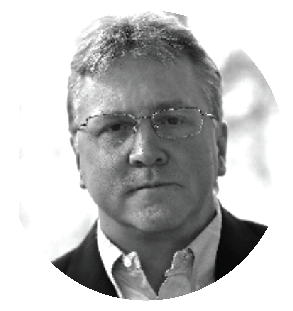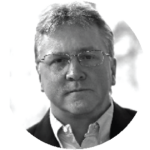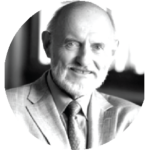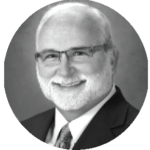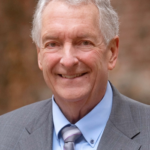Workforce Solutions often starts with Talent Management (TM) to help organizations solve strategic human capital challenges that drive business growth through three agendas:
- Identifying top talent
- Filling roles and jobs with employees who perform well today and
- Facilitating and even accelerating the development of those who will continue to develop and lead the business.
While these agendas are clear, far too often, TM outcomes are not as expected. Typical survey findings with senior executives and boards of directors from firms such as Gartner and DDI often report a lack of leadership bench for future success and leadership development investments that don’t increase leadership quality. We (four authors) have over 100 years of experience observing, researching, writing about, and advising on achieving the TM agenda. We will share our views about why TM has not made progress and suggest ways to make improvements.1
Why TM does not always produce better talent?
TM faces a “knowing-doing” or ideas with an impact gap.
Great science and best practices[1] exist on building talent, identifying potential, and creating succession plans that work. However, science only sometimes leads to improved practice. Even with compelling and rigorous research and exciting ideas that evoke internal leaders’ “wow” response, little significant change follows too often. While some internal TM practitioners have successfully driven integrated and impactful approaches within their organizations, not everyone gets it.
To diagnose why TM may still have gaps in the practice vs. the science, we rely on a well-known tool called Force Field Analysis with driving forces for change and restraining forces hindering change.
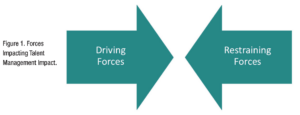
Figure 1. Forces Impacting Talent Management Impact.
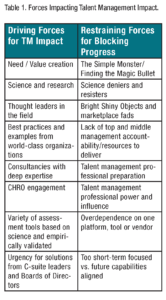
Table 1. Forces Impacting Talent Management Impact.
Driving Forces
Compelling driving forces are moving TM forward (Figure 1)
- Need– Few would deny that talent matters. Increasingly, TM is less about talent and more about how talent delivers value to all stakeholders inside and out. Without success in the marketplace, there is no workplace, so the talent management agenda is about value creation as defined by employee experience, business strategy, customer share, investor confidence (PE ratio), and even community reputation. The bottom line is that effective TM impacts stakeholder[2] outcomes, and the need exists to invest in it.
- Science–An abundance of rigorous and relevant research exists that is published and shared widely and often confirms findings. This research integrates TM systems with analytics[3] and provides data[5] to establish what works and what does not. This research increasingly passes the research rigor of the scientific method[6]. Theories of learning, agility, leadership, and future potential have been validated.
- Thought leaders– Serve the field best when they integrate research and practice to make knowledge productive and share their insights and learnings widely. Thoughtful thought leaders create new knowledge by engaging with real-world problems and sharing ideas.
- Best practices–For decades, companies have been identified as best practice sites where innovative TM practices have an impact. These companies are lauded in books, conferences, and podcasts.
- Consultancies–Consulting firms, many with deep expertise, often turn ideas into impact and help transfer knowledge from one setting to another. They become carriers of good ideas.
- CHRO engagement – Many CHROs understand the need for effective TM linked to the business strategy and are eager to build the bench for the organization.
- Variety of tools – Many well-researched and empirically validated tools exist in the marketplace that can be leveraged for development and decision-making. When done well, using data for TM provides a powerful set of insights above and beyond leader perceptions and reputations.
- Urgency from C–suite and Boards– The urgency and mandate for action are clear.
Restraining Forces (blocking effectiveness)
Since TM has no full impact, the restraining or blocking forces must be identified (Figure 1) and discussed in more detail to overcome them.
- The Simple Monster/Finding the Magic Bullet. For better or worse, TM isn’t simple, and oversimplification will not work. As simple as possible but yet effective is the correct answer here.
- TM agenda is complex, with many moving parts. As a result, the solutions need to be as “simple” and operational as possible. Simplistic answers (cookie-cutter answers, maxims, epigrams) are dangerous, but getting lost in the complexity is equally dangerous. This is the role of taxonomy or frameworks (middle-level theory) that help organize complexity into frameworks. Personality has the “big five” framework[4] that organizes a host of personality traits and facets. Accounting has the income statement and balance sheet to focus on a host of possible metrics[7]. The four food groups organize innumerable foods into categories.
- The talent (HR) field has people grasping at quick-fix metrics and tools without an integrated framework to shape action and measure outcomes. Taxonomy is a necessary foundation for science to move forward.
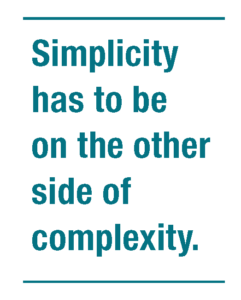
- PepsiCo has done a nice job in this area by building on its GREAT5 leadership framework as the center point for its talent, leadership assessment, development, and succession work in an integrated manner. While the GREAT5 sounds like a simple model[8] (and it is easy to remember), it’s based on deep science and validated assessment processes and, as a result, has been widely adopted by the company. See the article by Church and Ezama (under suggested readings):
- Simplicity has to be on the other side of complexity. This requires taxonomy or classification to organize the complex into simple frameworks that can then be used for progress. There is a need for a ‘human capability’ taxonomy (see the article by UIrich under suggested readings).
Science Deniers
HR and TM professionals often resist, ignore, or deny the science of Talent Management. Many elements are settled science, including:
- Three-point scales don’t work well.
- High Potentials and High Protentials exist and are different (for more on High Protentials see the article on www.talenttelligent.com).
- Potential and performance are not the same thing conceptually, scientifically, or when rated in organizations.
- The Nature/Nurture debate is settled; it’s about 50/50.
- Self-assessments are often suspect, mainly when used as the only input.
- There is no single silver bullet assessment tool – data from multiple tools and sources work better than any single one (this is known as the multi-method, multi-trait approach for a reason).
- People join companies and leave organizations primarily because of bad bosses.
- Coaching as a “one-off” process[9] is not effective.
- Being personally creative and having the ability to innovate are very different skill sets.
- Organizational surveys done well can produce significant insights, but poor designs and implementations lead to very biased results and employee disengagement.
- Intelligence is highly correlated to leadership success, as is learning agility and EQ. And more.
- (see 100 Things You Need to Know by Eichinger, Lombardo, and Ulrich under suggested readings)
These findings are available and public, but too many in TM ignore and don’t access them. After sharing RBL research with over 20,000 respondents, a credible colleague said, “Yes, but I believe… “What? Individuals can have beliefs that are indeed meaningful to them, but these beliefs may also be counter to (and therefore demonstrate) a denier of the science. What one believes may matter to the individual, but not to build a talent business.
Furthermore, we are amazed at the number of “repackagers” who don’t produce or even refer to the foundation science but use new words for old ideas. Sometimes, this is intentional, but other times, they don’t know or care to know the past science, research, and insights already available.
– Lack of Top Management Accountability. Building a strong bench is a twenty-to-thirty-year process from internship (20s) to a job performing well in top management (40-50s). It is a known process driven by science and best practices. If not followed, an organization will be short on the talent bench. Senior executives should be judged by their commitment to building this talent pipeline and whether they provide the necessary resources (e.g., funding and support). They are accountable for replacing themselves with prepared future leaders (see the article on www.talenttelligent.com or the video on YouTube TalentTelligent channel)
– Bright Shiny Objects. Too often, TM professionals are attracted to Bright Shiny Objects (BSOs). The new and different. The modern. The popular. The simple. The fad. The new book. The entertaining presenter on the conference circuit. Many years ago, Marvin Dunnette, a leading IO Psychologist, published an article titled Fads, Fashions, and Folderal (see link under resources below). He lists the requirements for something to be true. If it looks and sounds simple, it probably will not work well. It probably isn’t true if it claims that five things explain everything. If four colors can describe people, don’t bet the farm. Church and his colleagues have called this “Bad Talent Management” and provide a list of BSOs to watch out for (see links under suggested readings below). TM professionals need to be more discerning. Using analytics, TM professionals should explore the evidence to know what, why, and how TM works.
– Talent Management Profession Preparation. TM experts should be aware of the many research-based lists of the skills and competencies HR and TM professionals must have to be effective (See Results Based, Dave Ulrich, SHRM studies, and APA Division 13 surveys – Vicki Vanderveer). Just like medical doctors need to know, be, and do, TM Professionals need to know, be, and do. The TM profession bears partial responsibility for the lack of bench strength. The insights from these studies are often not used in developing and credentialing new TM professionals.
– Talent Management Professional Power and Influence. We see TM professionals who are fully knowledgeable and motivated to do what works daily. However, they often either lack organizational standing (they report too low in the organization) or are not persuasive enough to move top management toward their critical role in the bench-building process. They are too often focused on pitching their talent agenda more than helping their organization succeed in the marketplace. If an organization does not succeed in the marketplace, there is no workplace. Senior leaders are overwhelmingly focused on the here and now and how to succeed in tough times. At this moment, the black swans are COVID-19, the supply chain, the economy, and the war in Ukraine and elsewhere (Israel/Gaza). Influence is NOT sharing what you know (about talent) but how what you know helps someone else accomplish what they need to do to reach their goals. Talent issues are on top of every investor, board, and C-suite agenda, not to introduce a new initiative but to meet customer, strategic, and financial requirements.
– Overdependence on one tool, platform, or vendor. It is too common for a CHRO or TM Professional to lock into a favorite or familiar or comfortable tool, process, or vendor, even when moving to a new organization. While that may work, many times it doesn’t. New culture. New organization. New CEO. New CHRO. Another fault is the use of a favorite tool. Be it DISC or MBTI or Hogan or Ravens or Strengths or whatever. All have their strengths and weaknesses. They don’t all measure the same thing, and not all are valid enough to use for making decisions on talent. Each may account for unique variance and together be more powerful. Multi-trait multi-method approaches (MTMM), as described earlier, are a better best practice for a reason, and they reduce biases and legal risk[10] to organizations when making talent decisions.
– Too short-term focused vs. future capabilities aligned. The future is not the same as today. Often, leaders are developed for a seven-year turnover cycle. Some will enter the top jobs seven years from now. Other individuals will move into complex roles decades or more out. Further, the best plan is to have multiple bench candidates so you can promote one and hopefully keep a few of the others for additional roles (hence the standard guideline for “3-deep bench”). Even though the future is uncertain, estimates, projections, and guesses can be made. What are we developing leaders for? What challenges will they be facing seven years from now?
Leaders can’t learn from experiences they do not have. How you develop leaders depends on how you prepare them to solve.
Conclusion and Hope for a Better Future
In sum, we have all been called into clients lacking talent on the bench or worked internally to design and drive high-impact talent management processes. In almost all cases, an examination of its history, a past “get it done today” CEO has defunded TM best practices because of economics or personal preferences (e.g., “I don’t like the 9-box” or “I want to eliminate performance ratings,” or “I have my definition of potential based on my career” or even “our 5 item engagement survey doesn’t tell me anything useful” etc.). New CEO and CHRO combinations (they almost always change together) result in new ideas for the sake of change. Or a past bright, shiny object solution has failed to produce impact over the long term. Or there was no TM/SP presence over some past period, and now the organization is floundering. When science and best practices are not followed in the past, there will be a decade-long gap in producing new leaders. The bench will be as empty as the talent management promises. Lots to combat. Lots to work against. I was sailing against the wind.
We believe the TM Profession has many great, if often underutilized, professionals who are motivated to do better. We have the knowledge, the tools, and best practices. We need to signal confidence in the TM science. This need must be acknowledged and accepted by our top management customers. They need to be guided in the best practice hows.
All that’s left is to do it and do it well! We believe the best is always yet ahead, but we hope we can make progress against these resistors.
Suggested Readings:
- Latest Corporate Crisis: Only 11% Of Surveyed Companies Have A Strong Leadership Bench, (forbes.com), https://bit.ly/3SCYANU
- Gartner Identifies the Top Five Succession Risks That Derail Organizations’ Leadership Strategies https://bit.ly/47uGf9M
- 100 Things You Need to Know: Best People Practices for Managers & HR (Volume 1): Robert W. Eichinger, Michael M. Lombardo, Dave Ulrich: 9780974589206: Amazon.com: Books https://amzn.to/3u8VtTI
- PepsiCo’s Formula for Leadership Potential | ATD https://bit.ly/49p2K1M
- Amazon, PepsiCo Win HRM[11] Impact Award (shrm.org) https://bit.ly/40GJjxx
- https://www.linkedin.com/pulse/improve-sustainable-hr-impact-change-your-dave-ulrich/ https://bit.ly/3szMzy0
- Talent Insights Blog – TalentTelligent, LLC https://bit.ly/3SwTQJG
- Fads, fashions, and folderol in psychology (gwern.net) https://bit.ly/3QW3WCs
- Putting an End to Bad Talent Management: A Call to Action for the Field of Industrial and Organizational Psychology | Industrial and Organizational Psychology | Cambridge Core https://bit.ly/3QSjJCw
ENDNOTE
1 In sharing our concerns, this article is self-critical because TM has not progressed as we might have hoped even after the 60+ books, more than 100 articles, and more than 1000 engagements. So, the insights offered are for us as much as for readers.
An assessment recommending the most appropriate way of handing a certain type of task, based on an observation of the way that several organizations have successfully handled that task.
An individual, group, or organization, who may affect, be affected by, or perceive itself to be affected by a decision, activity, or outcome of a project.
